We use cookies and other technologies to personalize your experience and collect analytics.
A Vanished Wholeness
A Vanished Wholeness
7 March – 12 April 2025
Modern Art is pleased to present A Vanished Wholeness, an exhibition of drawings and works on paper dating from 1923 to 2025. The exhibition showcases the work of artists united by their exploration of the human body not as a solid whole, but as restless, fragile, and volatile. Many examples throughout A Vanished Wholeness reflect on heightened states of being.
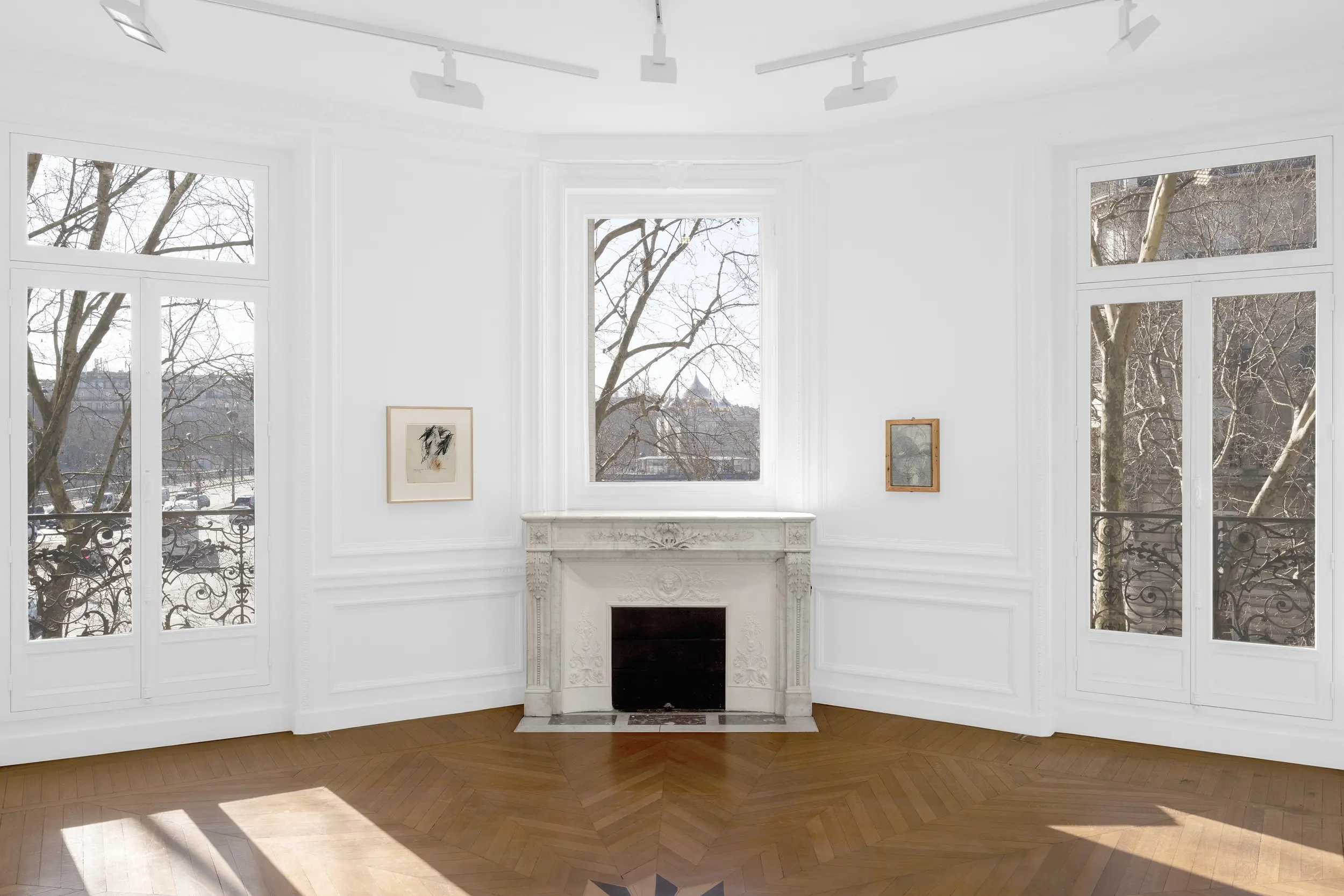
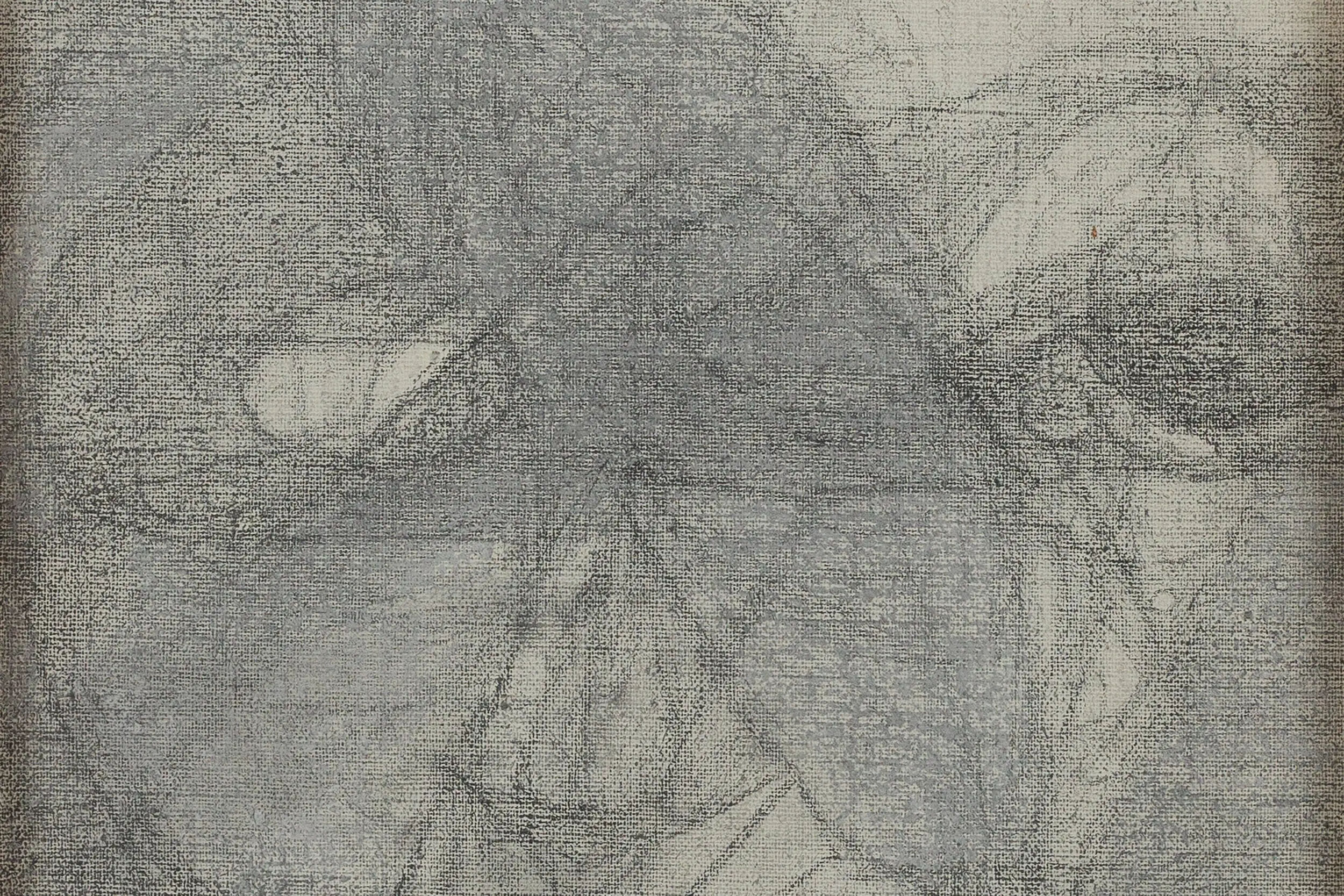
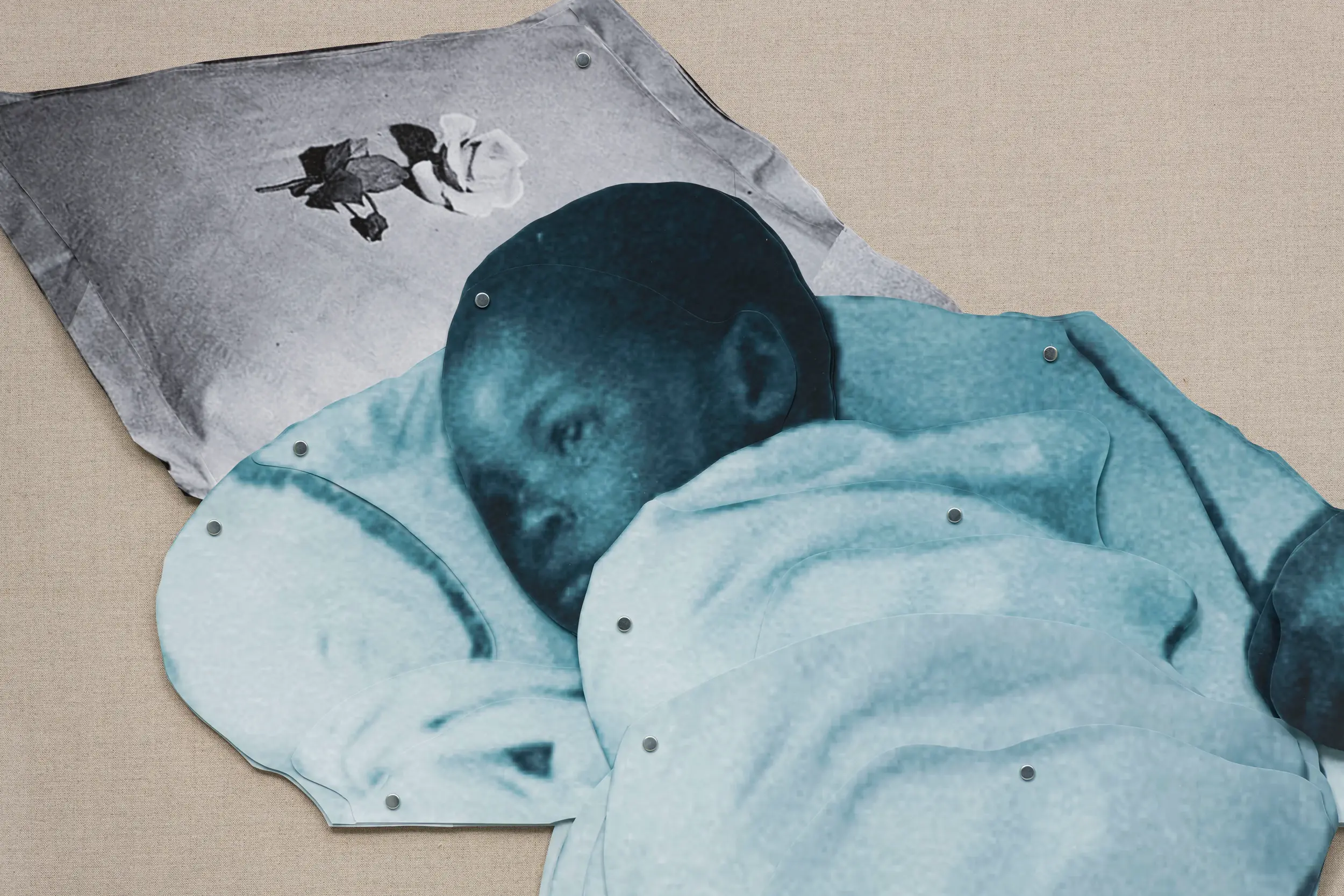
With artworks acting as visceral responses to personal history, gender identity, bodily objectification and aesthetic traditions. Many of the artists seek to tell charged, highly personal stories. Serving as conduits for these stories are many different renderings of bodies; from weightless spectres to corporeal bodies possessing contorted limbs, from quiet self-portraits to phantasmagorical dreamscapes.
In Eileen Agar’s (1899-1991) Infinite Loop (1941), the indistinct outlines of two figures join in a tangled embrace, possibly Agar herself with her husband Joseph Bard, or a celebration of her affair with fellow artist Paul Nash. Fuelled by trauma-induced bouts of paranoia and hallucinations, Unica Zurn’s (1916-1970) intricate 1950s drawings of unknown and unknowable forms, part-human, part-beastlike, go beyond the realm of pathological fantasy.
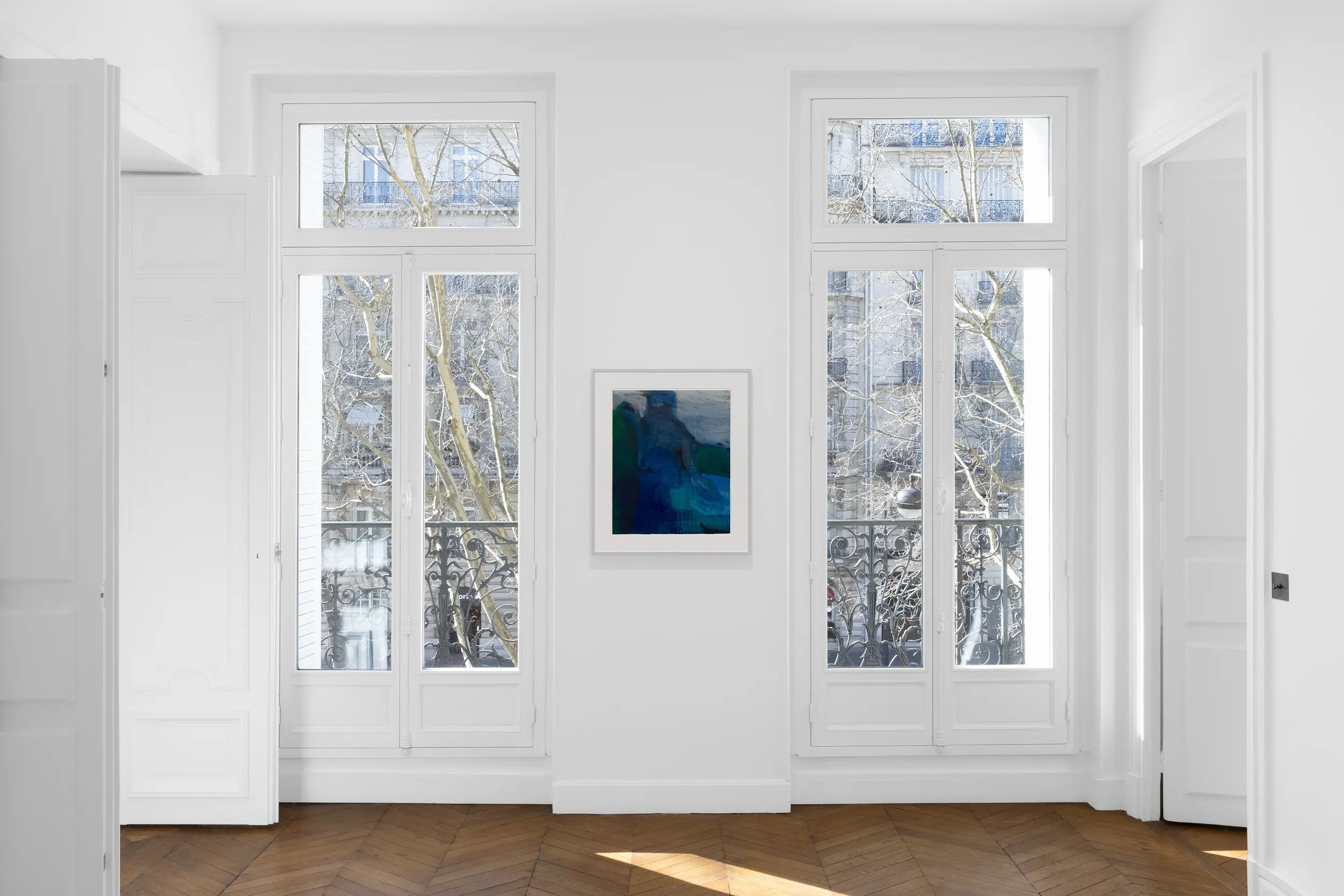

For André Masson (1896-1987), it was the lasting impact of the horrors of the First World War that propelled him to turn his notion of self, inside out. Having been severely wounded by a bomb blast, Masson’s series of drawings of disembodied heads (often based on his own) take on the appearance of reconstituted shrapnel.
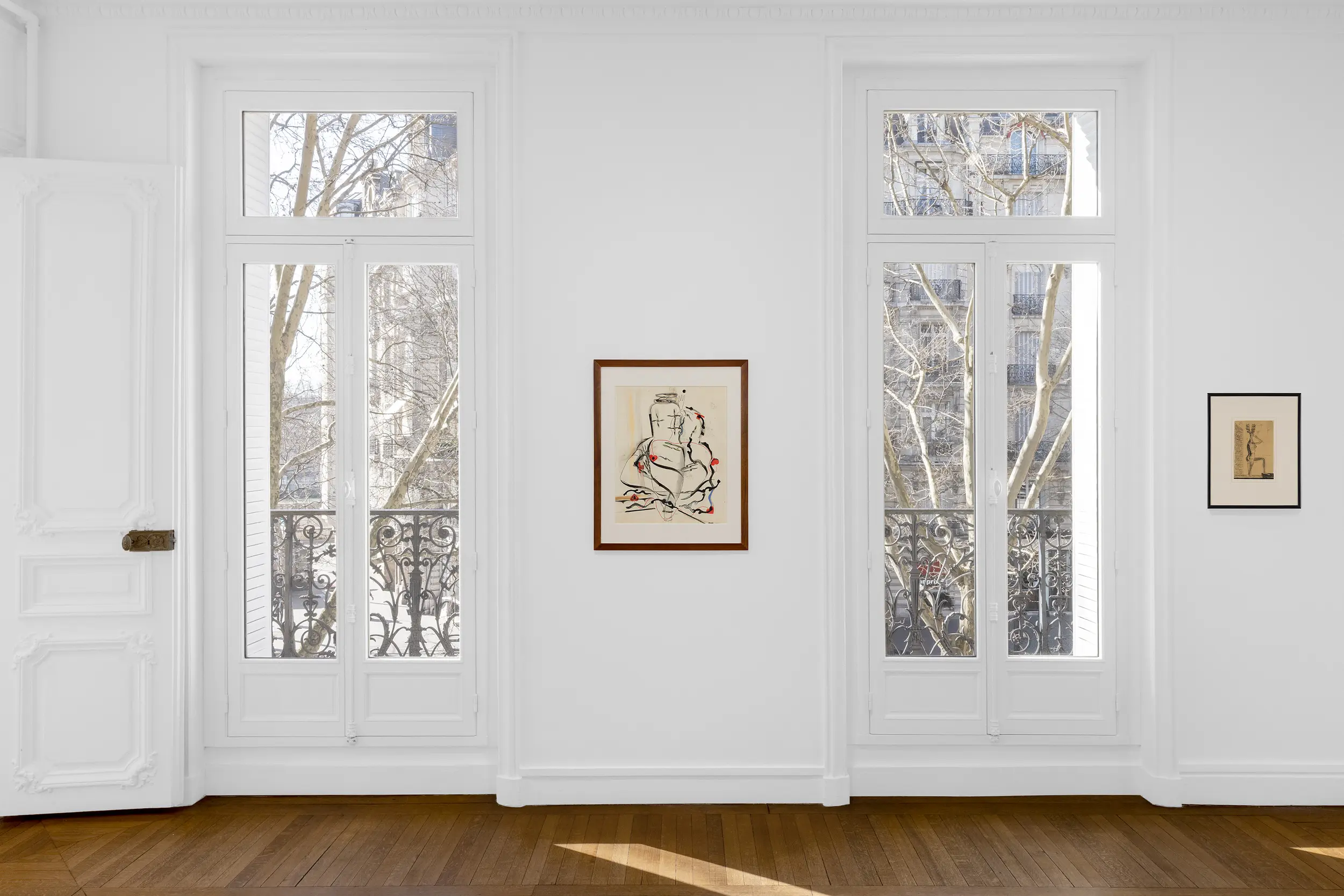
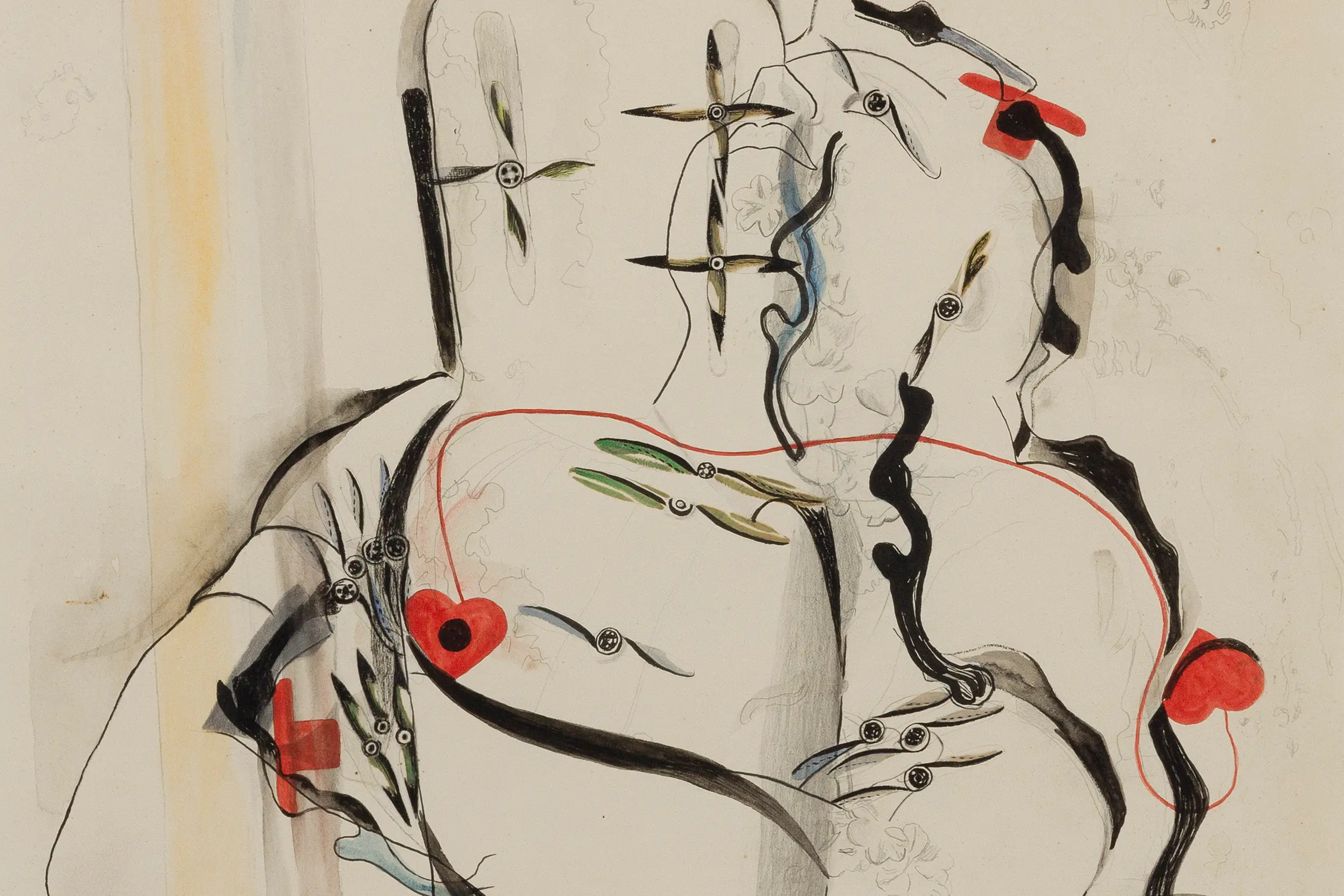
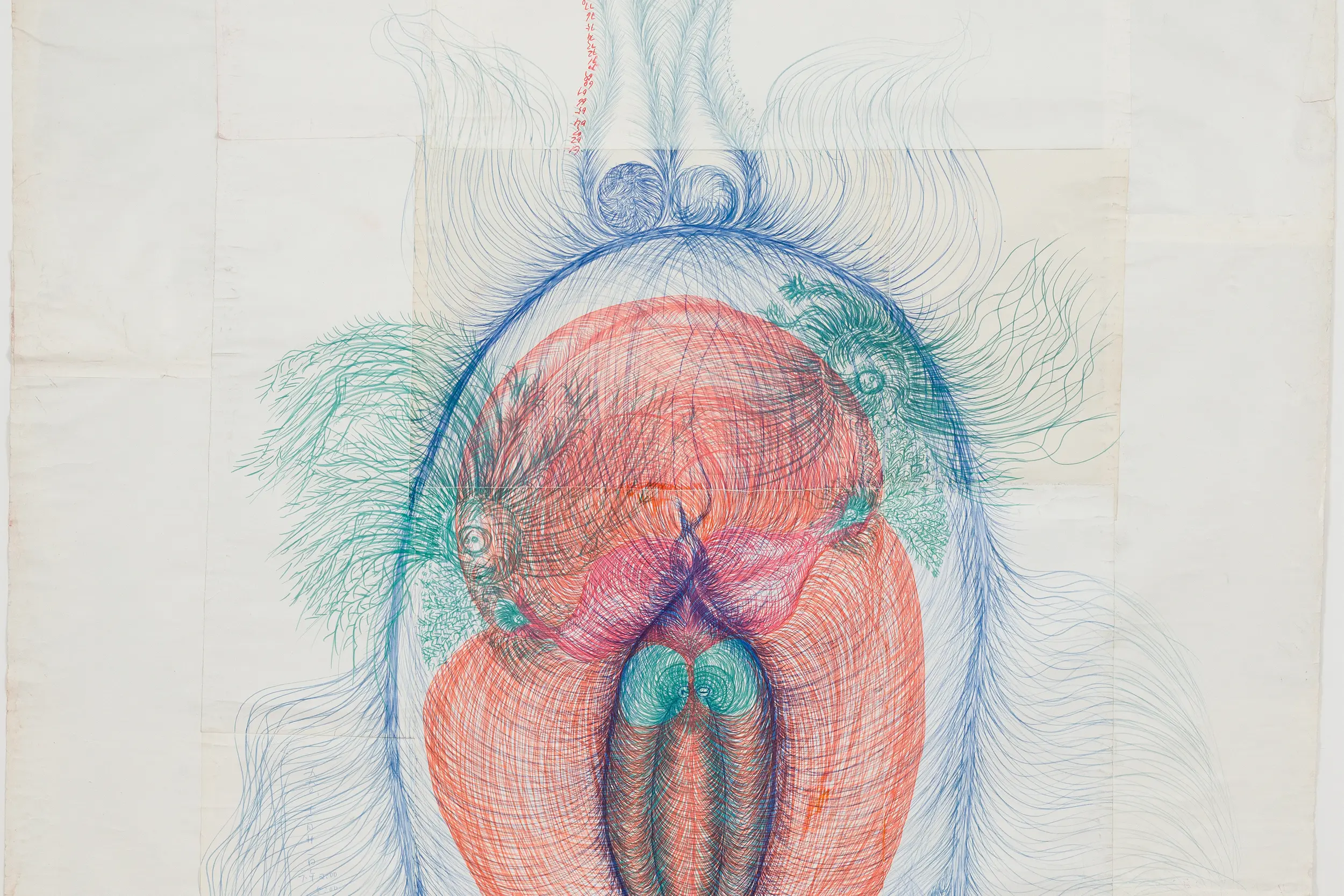
For the Chinese artist Guo Fengyi (1942-2010) the onset of debilitating arthritis led her to a spiritual transformation through the healing powers of Qigong. This meditative healing process often provoked visions of fantastical bodily shapes and colours which she would subsequently draw on paper. Fengyi would sometimes attribute these visions to powers beyond herself. For the Czech writer, palaeontologist, psychical investigator and spiritualist artist František J Pecka (1878-1960), his colourful portraits were produced in a trance under the direction of his spirit guides.
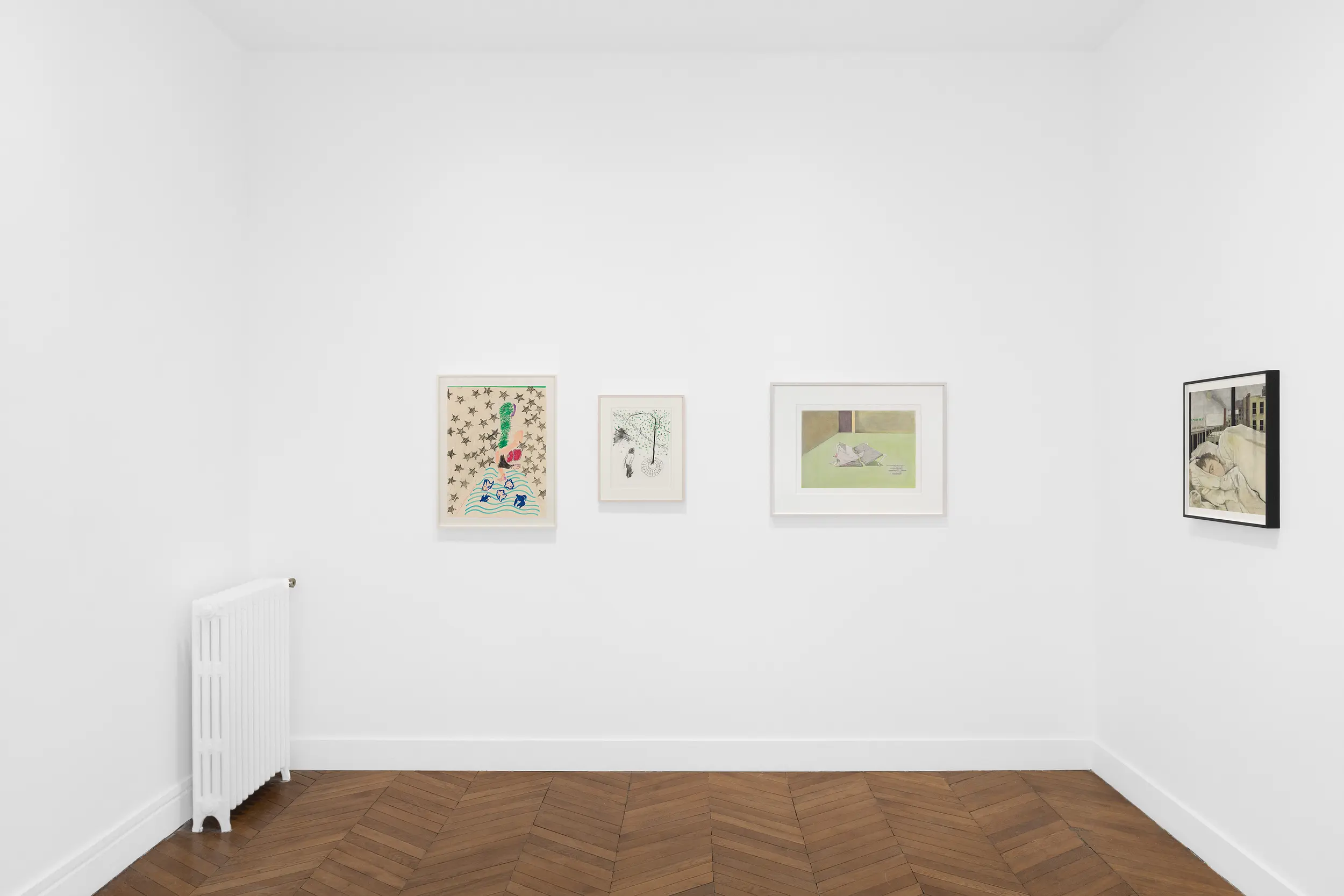
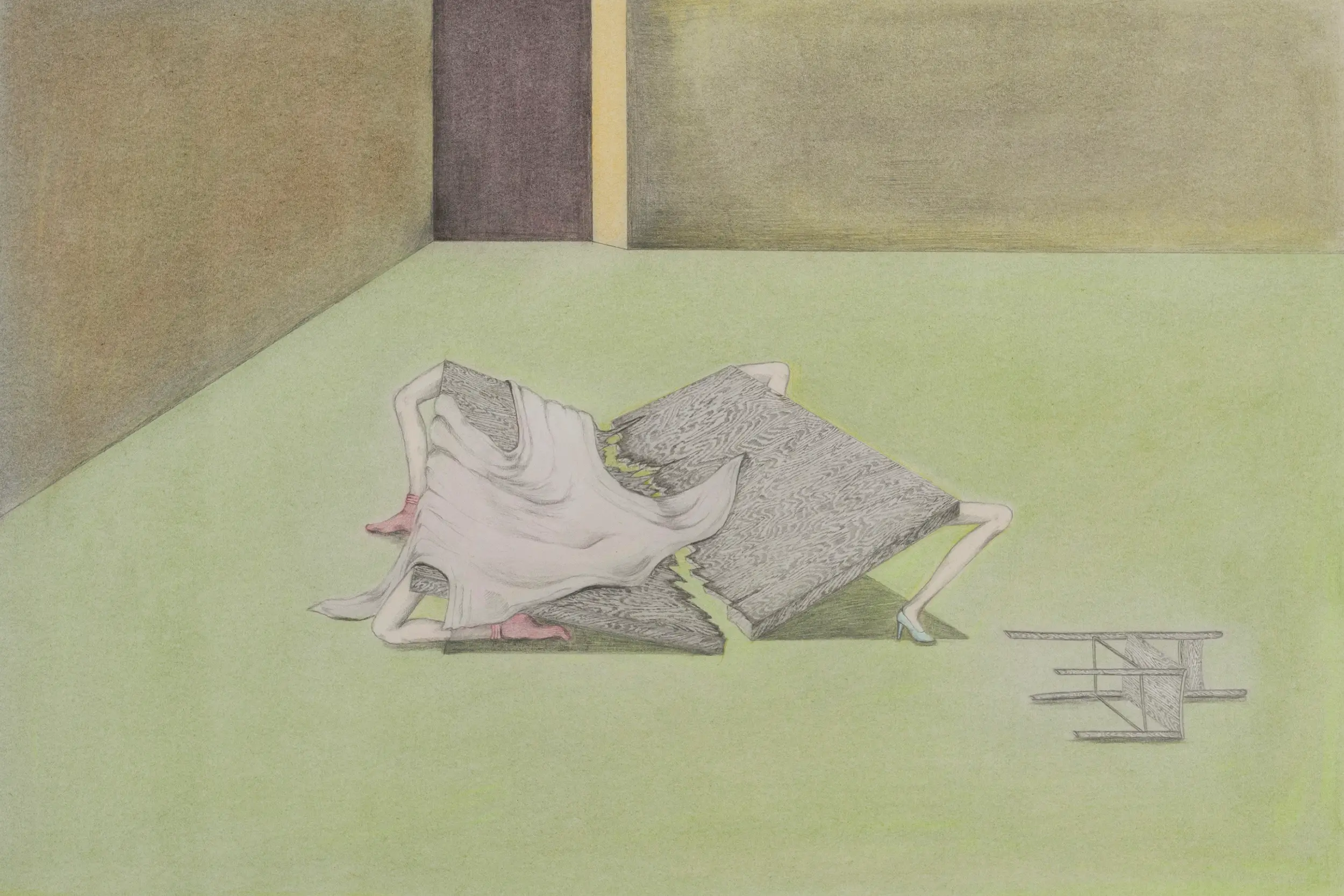
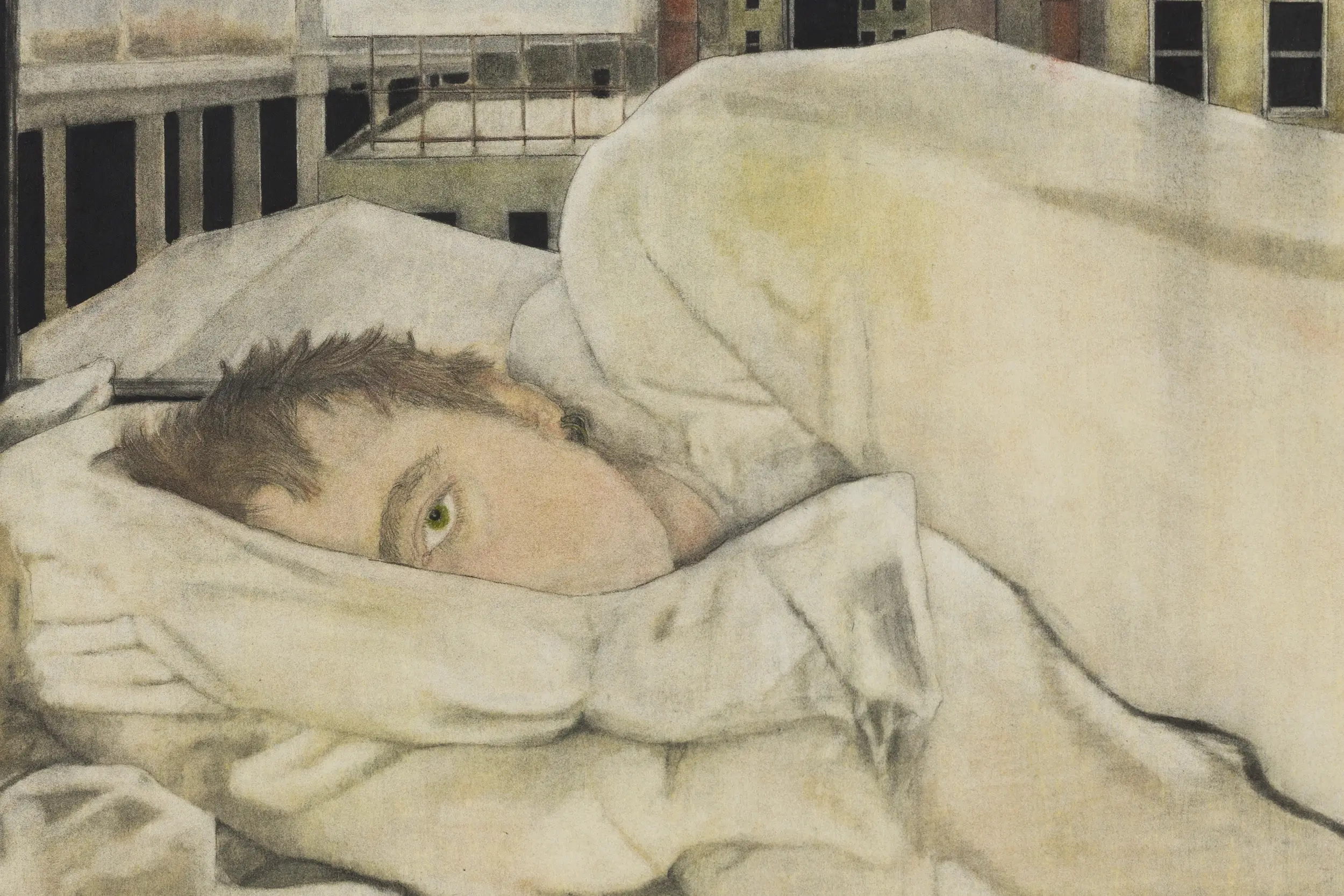
While an otherworldliness characterises the work of mediumistic artists, for Marisa Merz (1926-2019) and Otto Meyer-Amden (1885-1933), their depictions of the body verged towards the imperceptible and ethereal. Merz often regarded her work as deliberately unfinished and regarded the transformative aspect of her art as something that existed “beyond time”.
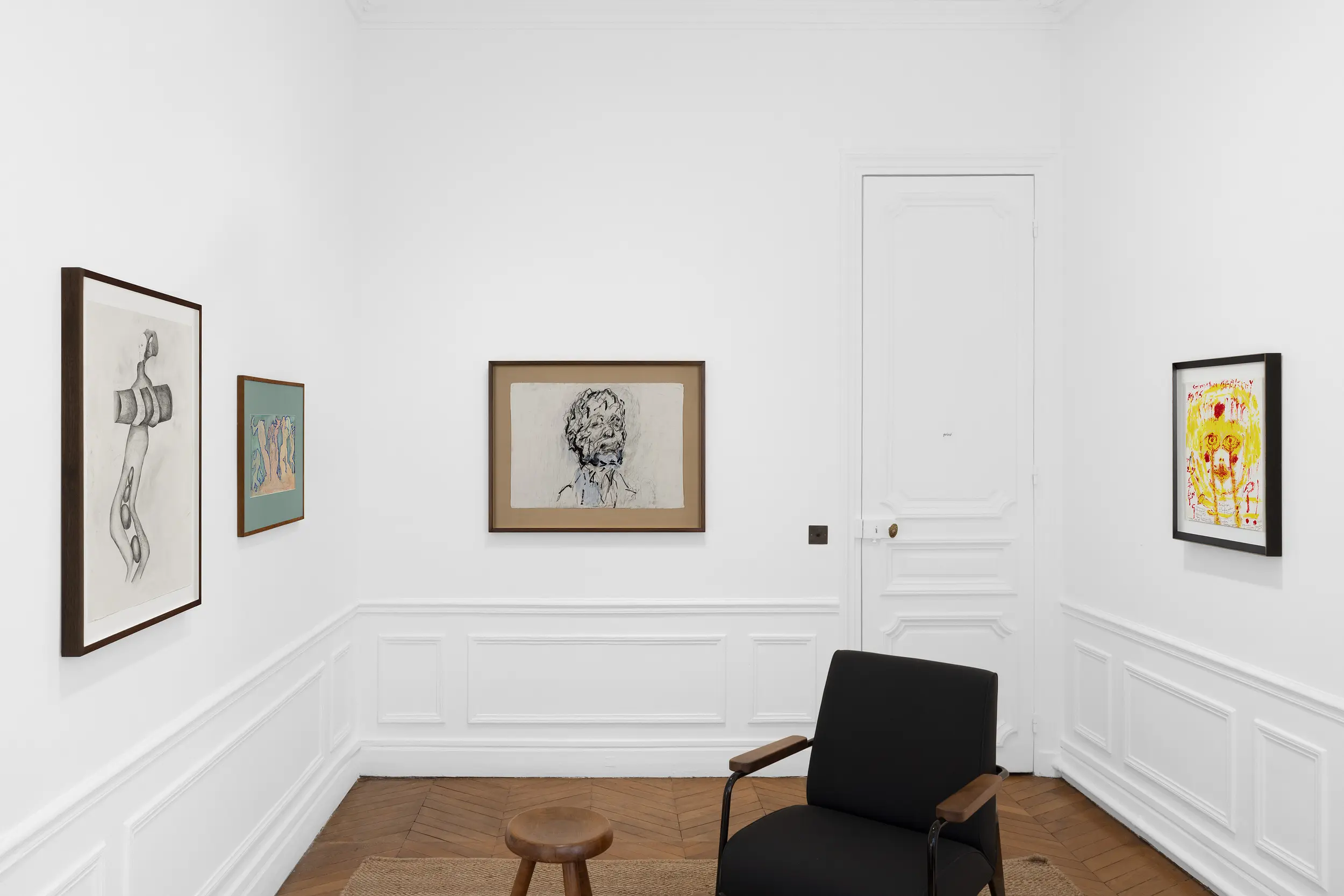
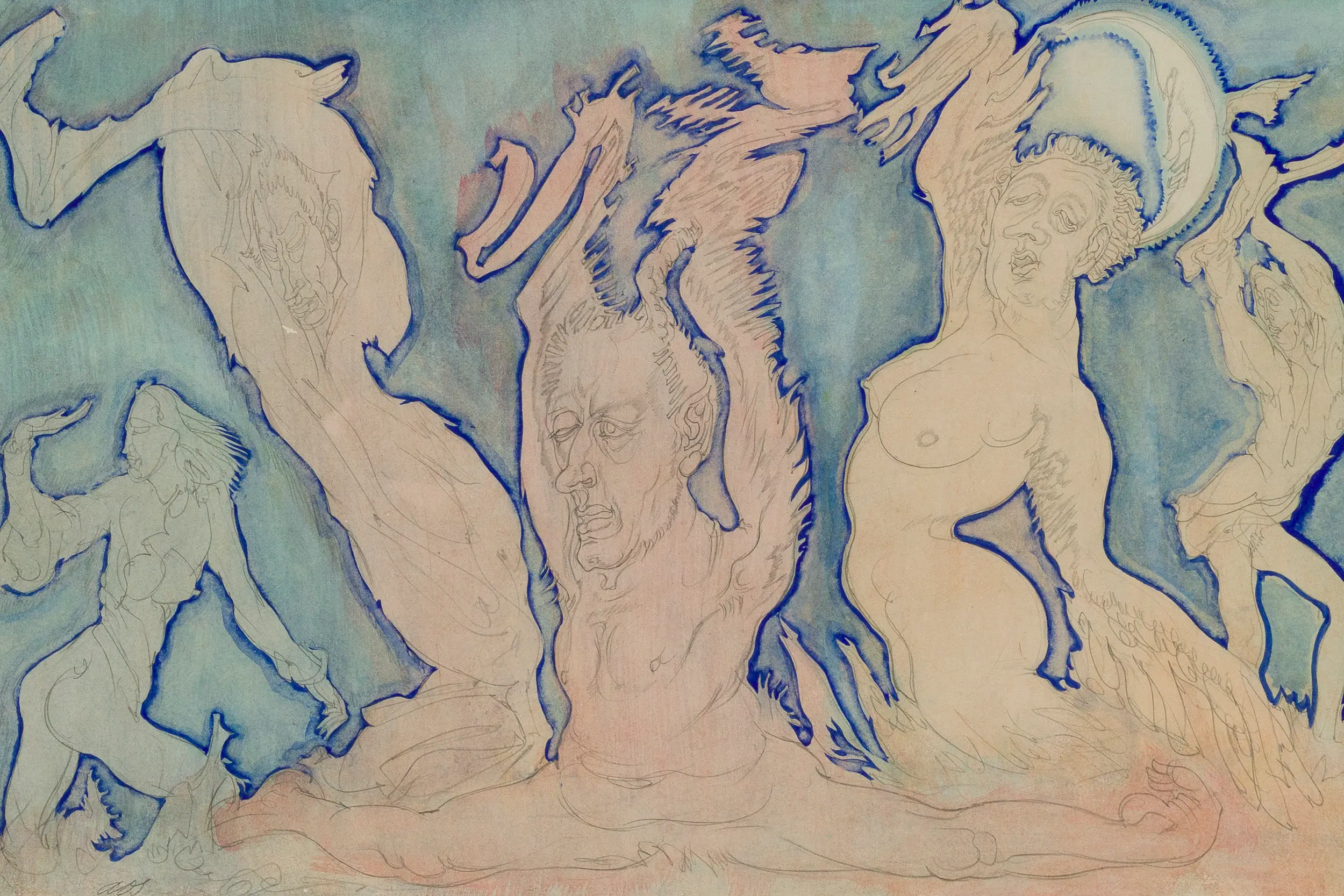
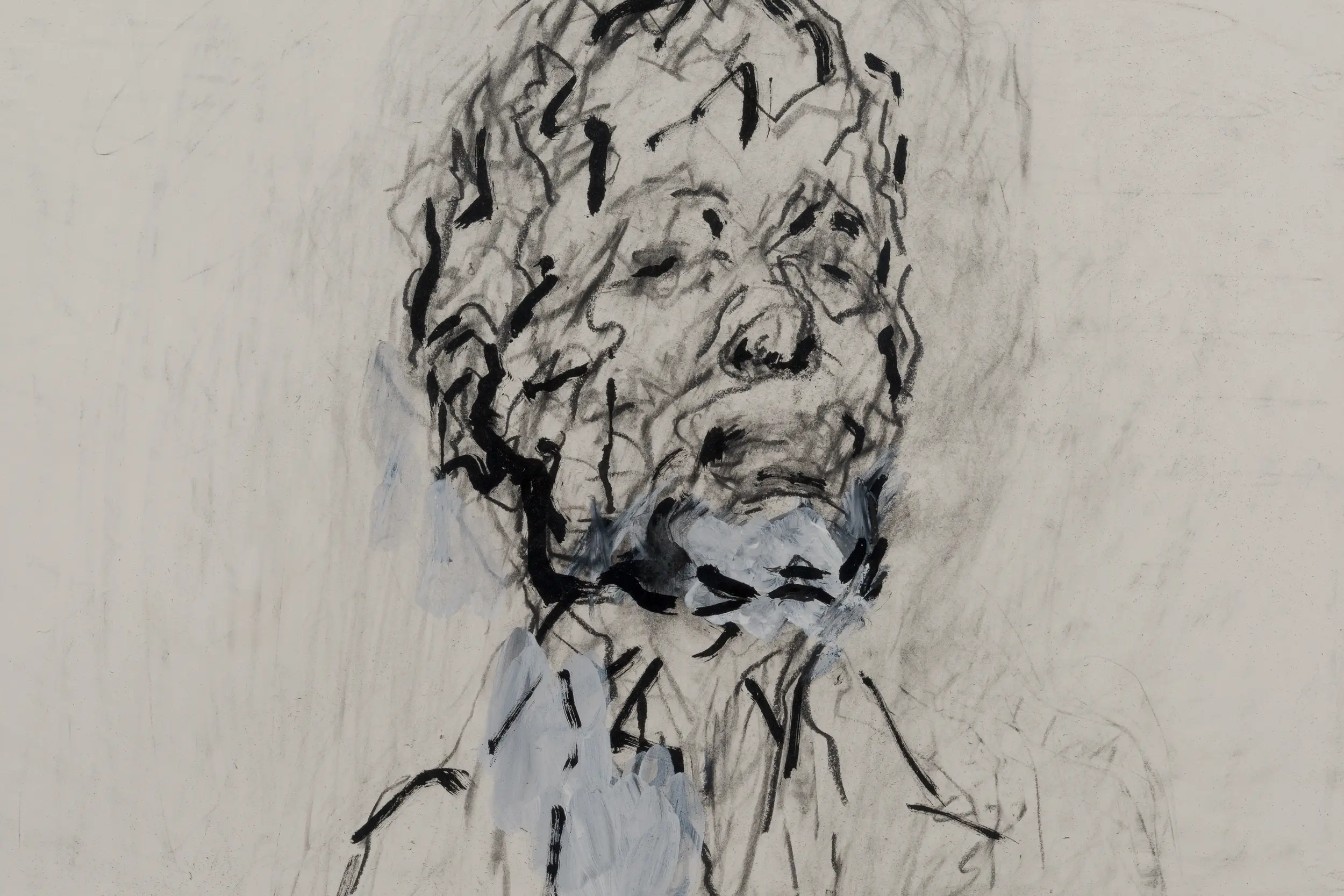
This atemporal quality is recognisable too in the work of Waldemar Zimbelmann, where strange bodily forms are bent and twisted in space. With their painterly layering and varied viewpoints, the path to disorientation is never far away, a sense that comes across in Walter Price’s collages. In a similar vein, Wura-Natasha Ogunji’s figures, made using thread and ink on paper, challenge the space they exist in while exuding a powerful sense of self-determination.
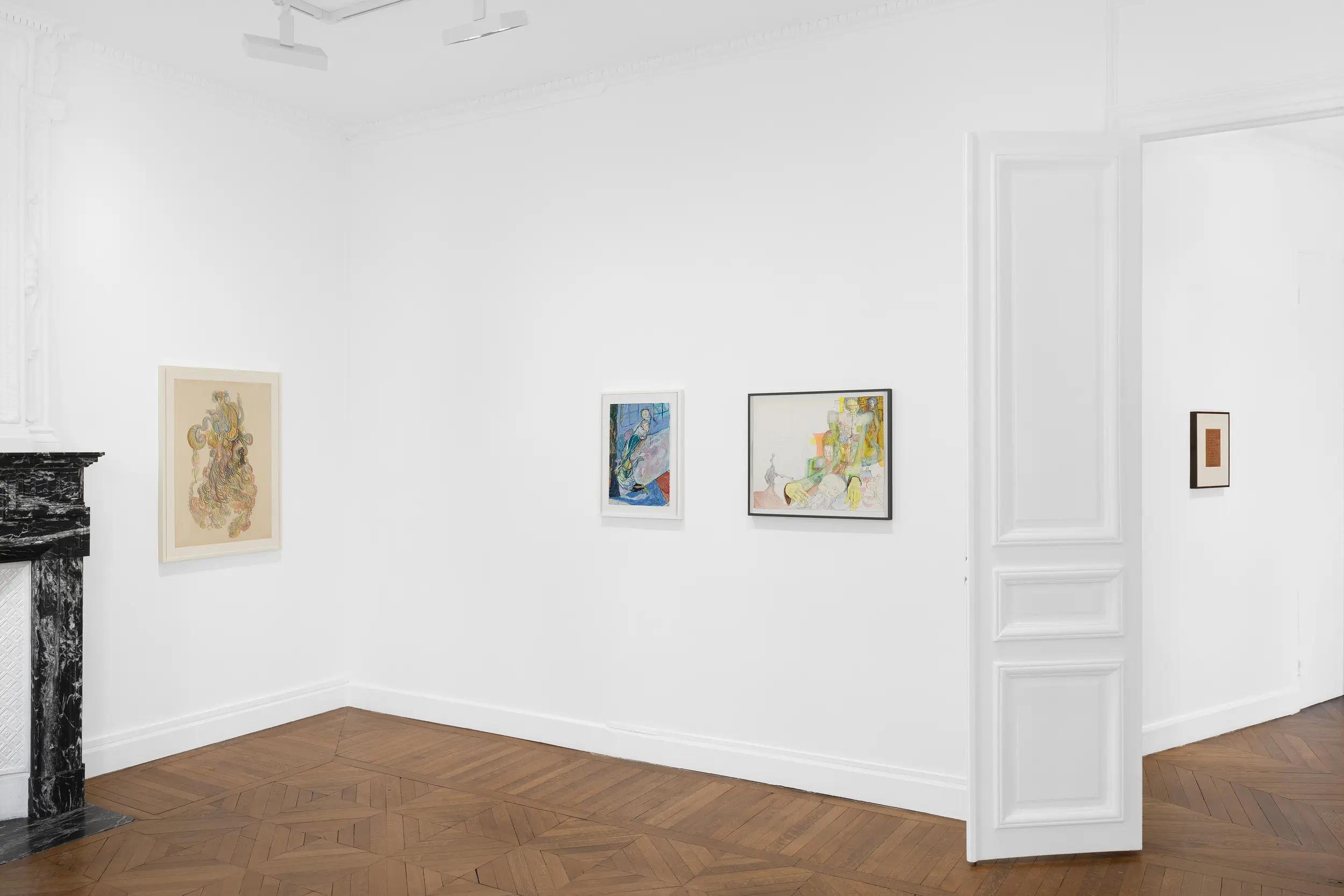
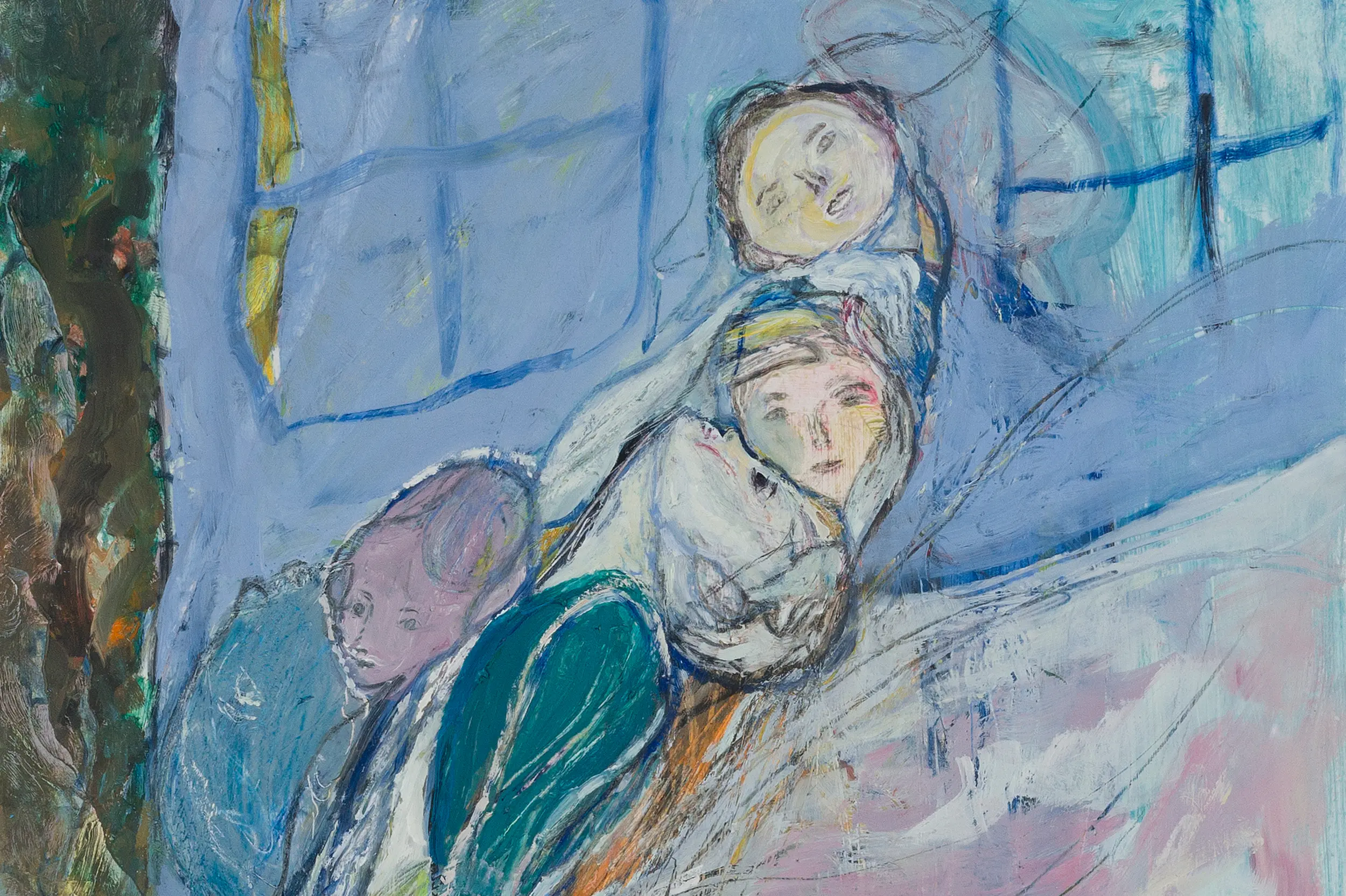
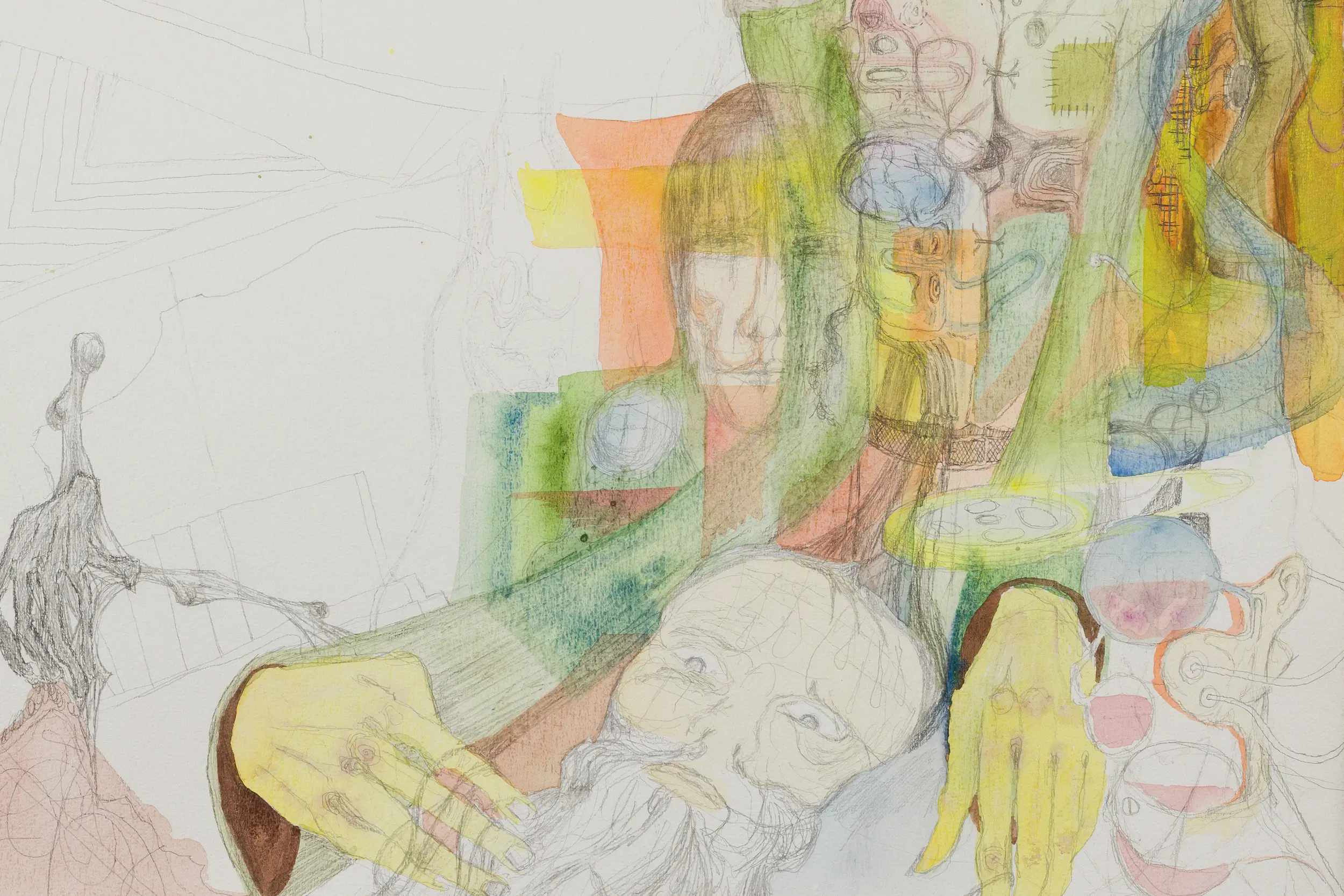
Curated by Simon Grant, this exhibition follows on from Grant’s 2023 curated exhibition, The Moth and the Thunderclap, at Modern Art, Helmet Row. A Vanished Wholeness includes the work of the artists: Eileen Agar, Kai Althoff, Frank Auerbach, John Banting, Hans Bellmer, Semiha Berksoy, Huma Bhabha, Tim Breuer, Justin Caguiat, Christopher Culver, René Daniëls, Enrico David, Guo Fengyi, Lucian Freud, Birgit Jürgenssen, Sanya Kantarovsky, Willem de Kooning, André Masson, Marisa Merz, Annette Messager, Otto Meyer-Amden, Wura-Natasha Ogunji, Frida Orupabo, František Jaroslav Pecka, Walter Price, Robert Smithson, Austin Osman Spare, Hedda Sterne, Jan Švankmajer, Alina Szapocznikow, Jan Eustachy Wolski, Waldemar Zimbelmann, Unica Zürn.
The exhibition is open by appointment only. Click here to book an appointment.

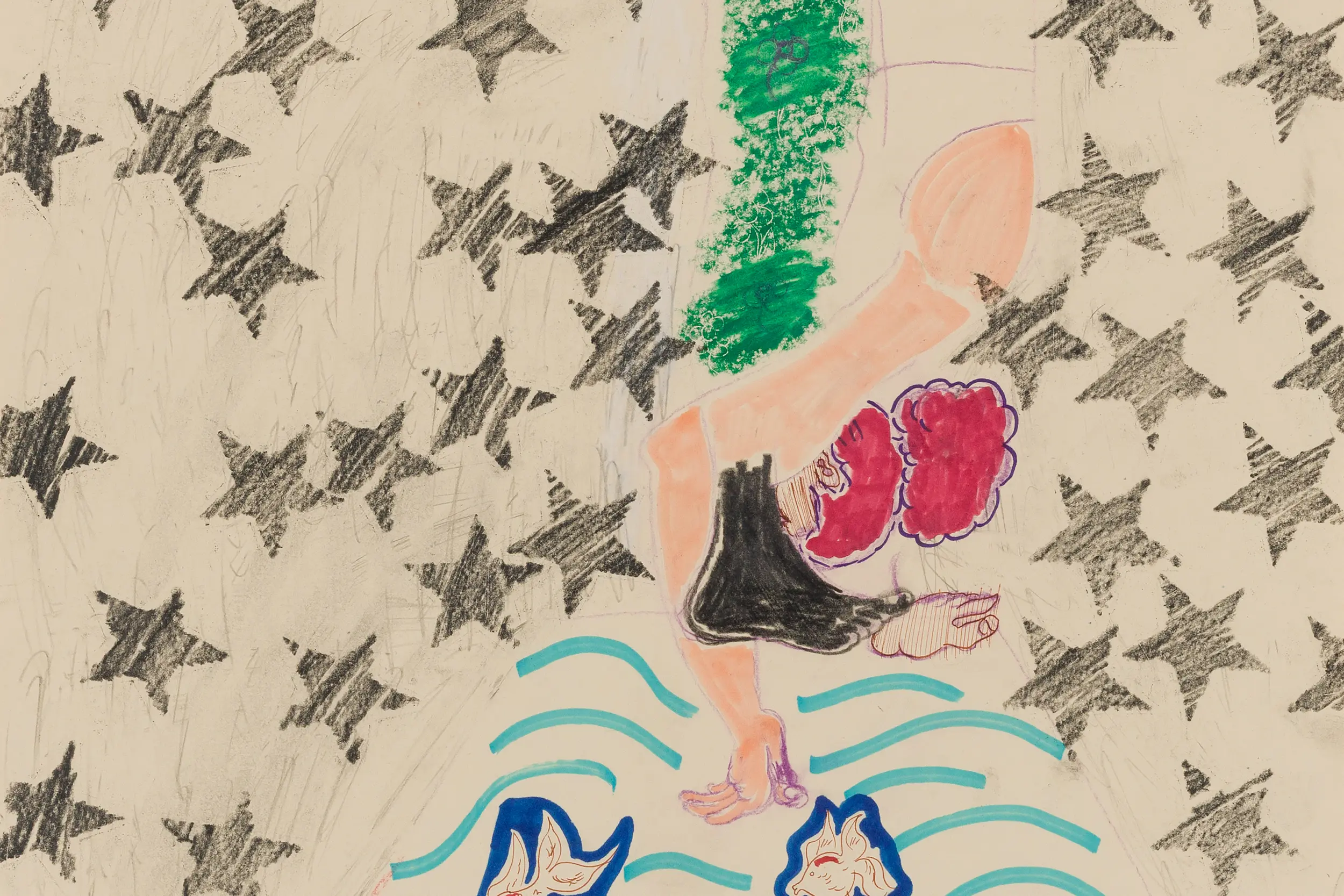
Press Release
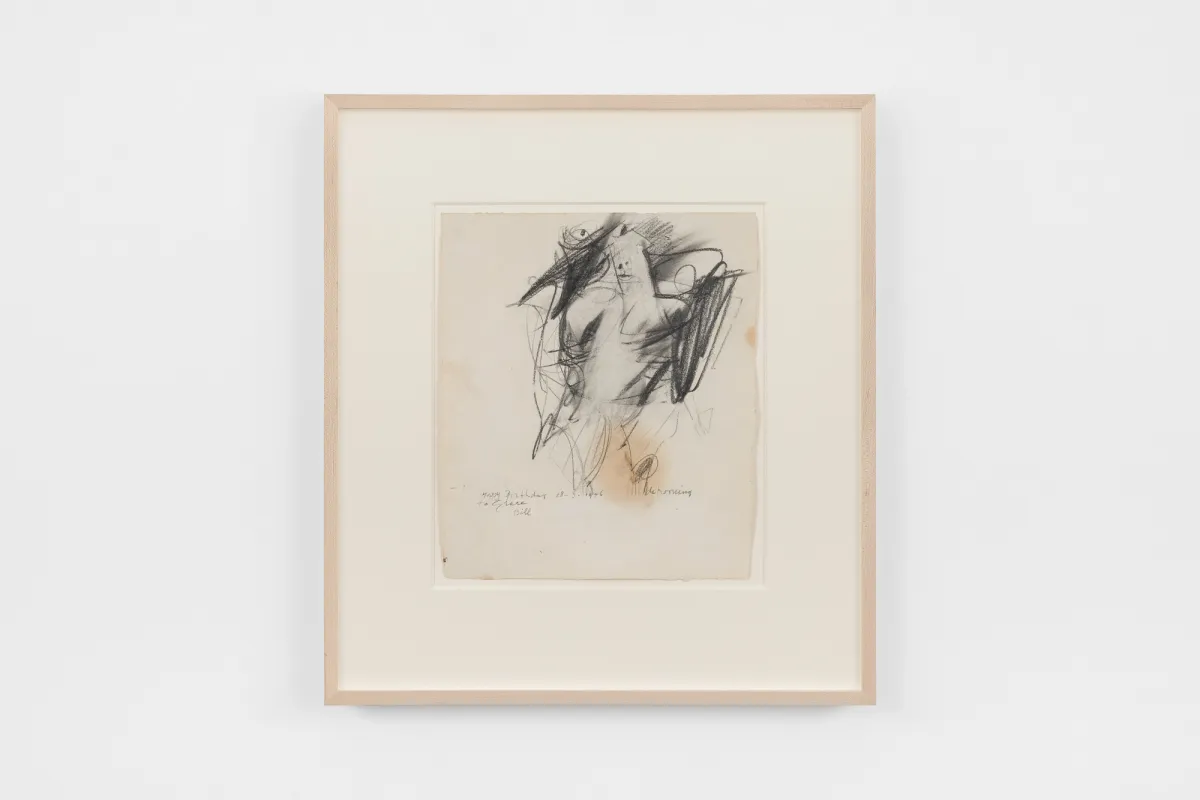
Modern Art is pleased to present A Vanished Wholeness, an exhibition of drawings and works on paper dating from 1923 to 2025. The exhibition showcases the work of artists united by their exploration of the human body not as a solid whole, but as restless, fragile, and volatile. Many examples throughout A Vanished Wholeness reflect on heightened states of being. With artworks acting as visceral responses to personal history, gender identity, bodily objectification and aesthetic traditions. Many of the artists seek to tell charged, highly personal stories. Serving as conduits for these stories are many different renderings of bodies; from weightless spectres to corporeal bodies possessing contorted limbs, from quiet self-portraits to phantasmagorical dreamscapes.
In Eileen Agar’s (1899-1991) Infinite Loop (1941), the indistinct outlines of two figures join in a tangled embrace, possibly Agar herself with her husband Joseph Bard, or a celebration of her affair with fellow artist Paul Nash. Fuelled by trauma-induced bouts of paranoia and hallucinations, Unica Zurn’s (1916-1970) intricate 1950s drawings of unknown and unknowable forms, part-human, part-beastlike, go beyond the realm of pathological fantasy. For André Masson (1896-1987), it was the lasting impact of the horrors of the First World War that propelled him to turn his notion of self, inside out. Having been severely wounded by a bomb blast, Masson’s series of drawings of disembodied heads (often based on his own) take on the appearance of reconstituted shrapnel.
For the Chinese artist Guo Fengyi (1942-2010) the onset of debilitating arthritis led her to a spiritual transformation through the healing powers of Qigong. This meditative healing process often provoked visions of fantastical bodily shapes and colours which she would subsequently draw on paper. Fengyi would sometimes attribute these visions to powers beyond herself. For the Czech writer, palaeontologist, psychical investigator and spiritualist artist František J Pecka (1878-1960), his colourful portraits were produced in a trance under the direction of his spirit guides.
While an otherworldliness characterises the work of mediumistic artists, for Marisa Merz (1926-2019) and Otto Meyer-Amden (1885-1933), their depictions of the body verged towards the imperceptible and ethereal. Merz often regarded her work as deliberately unfinished and regarded the transformative aspect of her art as something that existed “beyond time”. This atemporal quality is recognisable too in the work of Waldemar Zimbelmann, where strange bodily forms are bent and twisted in space. With their painterly layering and varied viewpoints, the path to disorientation is never far away, a sense that comes across in Walter Price’s collages. In a similar vein, Wura-Natasha Ogunji’s figures, made using thread and ink on paper, challenge the space they exist in while exuding a powerful sense of self-determination.
Curated by Simon Grant, this exhibition follows on from Grant’s 2023 curated exhibition, The Moth and the Thunderclap, at Modern Art, Helmet Row. A Vanished Wholeness includes the work of the artists: Eileen Agar, Kai Althoff, Frank Auerbach, John Banting, Hans Bellmer, Semiha Berksoy, Huma Bhabha, Tim Breuer, Justin Caguiat, Christopher Culver, René Daniëls, Enrico David, Guo Fengyi, Lucian Freud, Birgit Jürgenssen, Sanya Kantarovsky, Willem de Kooning, André Masson, Marisa Merz, Annette Messager, Otto Meyer-Amden, Wura-Natasha Ogunji, Frida Orupabo, František Jaroslav Pecka, Walter Price, Robert Smithson, Austin Osman Spare, Hedda Sterne, Jan Švankmajer, Alina Szapocznikow, Jan Eustachy Wolski, Waldemar Zimbelmann, Unica Zürn.




















